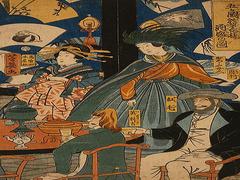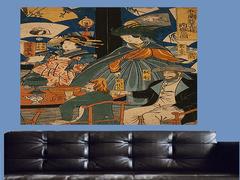Introduction
Woodblock printing, a revolutionary technique originating in ancient times, paved the way for significant advancements and inventions in various fields. This traditional printing method, which originated in East Asia, brought about transformative changes in communication, literacy, and art. In this article, we explore the remarkable inventions that were directly or indirectly influenced by the development and widespread use of woodblock printing.
- Movable Type Printing
Woodblock printing played a pivotal role in the evolution of printing techniques, leading to the invention of movable type printing. While woodblock printing involved carving an entire page or image onto a wooden block, movable type printing allowed individual characters or letters to be arranged and rearranged to create texts. Invented by Bi Sheng in China during the 11th century, movable type printing significantly increased the speed and efficiency of printing, making books and other printed materials more accessible to a wider audience.
- Printing Press
Building upon the concept of movable type printing, Johannes Gutenberg revolutionized the printing world in the 15th century with his invention of the printing press. Gutenberg's invention utilized metal type, which could be easily rearranged and reused, and a mechanical press for efficient and consistent printing. The printing press facilitated the mass production of books and fueled the spread of knowledge during the Renaissance and beyond, shaping the course of human history.
- Mass Media and Journalism
Woodblock printing, with its ability to reproduce multiple copies of an image or text, laid the groundwork for the development of mass media and journalism. As printing techniques evolved, newspapers, magazines, and periodicals became more accessible and widespread. The dissemination of information through printed materials became a powerful force in shaping public opinion, fostering literacy, and promoting the exchange of ideas.
- Modern Typography and Graphic Design
Woodblock printing, with its emphasis on visual aesthetics and design, contributed to the evolution of modern typography and graphic design. The careful selection and arrangement of characters in woodblock prints laid the foundation for the principles of layout, typefaces, and visual hierarchy that are fundamental in contemporary graphic design. Woodblock prints also served as a source of inspiration for artists and designers, influencing the development of new artistic styles and visual expressions.
- Cultural Exchange and Global Art Movements
Woodblock prints, particularly ukiyo-e prints from Japan, had a profound influence on Western art movements during the 19th century. The introduction of ukiyo-e prints to Europe sparked a fascination with Japanese aesthetics, leading to the art movement known as Japonism. Western artists, including Vincent van Gogh and Claude Monet, drew inspiration from the bold compositions, vibrant colors, and flattened perspectives found in ukiyo-e prints. This cross-cultural exchange reshaped the trajectory of Western art and expanded the horizons of artistic expression.
Conclusion
Woodblock printing, with its innovative approach to reproducing images and texts, sparked a series of groundbreaking inventions and transformations in the world of printing, communication, and art. From movable type printing and the printing press to the impact on mass media, journalism, typography, and global art movements, woodblock printing laid the foundation for numerous advancements that continue to shape our world today. Its enduring legacy serves as a testament to the power of human ingenuity and creativity in pushing the boundaries of technological innovation.
- Unveiling the Artistic Process: Steps of Woodblock Printing
- Japanese Woodblock History - Ukiyo-e: The Floating World Unveiled - A Journey into the Artistic Splendor of Japanese Woodblock Prints
- The History of Japanese Woodblock Printing
- The Artistic Journey: Exploring the Rich History of Japanese Woodblock Prints
- The Birth of a Revolutionary Technique: Woodblock Printing and the Tang Dynasty
- The Innovative Legacy: How Woodblock Printing Led to Remarkable Inventions
- The Significance of Japanese Woodblock Printing: A Timeless Artistic Legacy
- Unlocking the Beauty: How to Identify Japanese Woodblock Prints
- Unveiling the Ancient Art: Exploring the Oldest Japanese Woodblock Print




